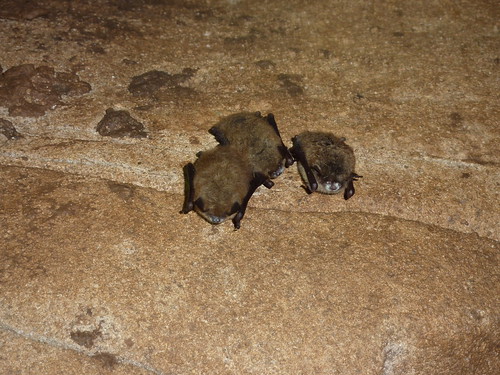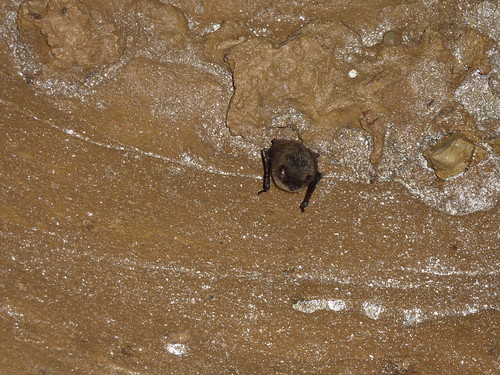


###
Kentucky Tourism, Arts and Heritage Cabinet News Release
Kentucky Department of Fish & Wildlife Resources
White-nose Syndrome Confirmed In Kentucky Bat
Apr 13, 2011
Media Contacts:
Sunni L. Carr
Ky. Dept. of Fish and Wildlife Resources
1-800-858-1549
FRANKFORT, Ky. – The Kentucky Department of Fish and Wildlife Resources and the U.S. Fish and Wildlife Service (USFWS) have detected the presence of white-nose syndrome in a bat residing in Trigg County, located in southwest Kentucky.
A suspect little brown bat from a cave in Trigg County, about 30 miles southeast of Paducah, was submitted to the Southeastern Cooperative Wildlife Disease Study (SCWDS) in Athens, Ga., which confirmed the disease.
White-nose syndrome was first detected in New York state in 2006. It has since killed more than one million cave-dwelling bats in eastern North America. Mortality rates of bats have reached almost 100 percent in multi-year infected caves. With confirmation of the syndrome in Kentucky, a total of 16 states - mostly in the eastern U.S. - and three Canadian provinces have now been confirmed infected.
“This is likely the most significant disease threat to wildlife Kentucky has ever seen”, said Kentucky Fish and Wildlife Commissioner, Dr. Jonathan Gassett. “It would be professionally irresponsible to take no action to stop or slow this disease. Bats are an important part of our natural environment, acting as pollinators and consuming mosquitoes and other insect pests across the landscape. We plan to aggressively manage this threat as it occurs in Kentucky in order to protect and conserve our bat populations.”
Anticipating the arrival of white-nose syndrome (WNS) in Kentucky, biologists have taken exhaustive measures to limit its spread.
“We have had a long-term partnership to address white-nose syndrome in Kentucky since it was first discovered in New York state,” said Mike Armstrong, USFWS Regional WNS Coordinator. “Now that it is confirmed here, we will continue to support the state in their research and management to limit the spread as much as we can.”
WNS is known to be transmitted primarily from bat to bat, but fungal spores may be inadvertently carried to caves by humans on clothing and caving gear. Both state and federal agencies took pro-active measures to limit potential human movement of the disease. These measures included increased education on decontamination procedures, surveillance, monitoring and cave closures on private, state and federal lands. All measures were included in the “Kentucky WNS Response Plan” developed in 2009.
Kentucky was the first state to develop a response plan to address WNS both before and after its arrival in the state.
Almost 100 hibernacula were checked throughout Kentucky during the winter. The Trigg County cave was one of five revisited by scientists upon confirmation of WNS in Ohio. These hibernacula were rechecked due to their known proximity to infected sites in adjacent states. The privately-owned Trigg County cave is used as a hibernaculum by six species, including the endangered Indiana bat, and is a summer roost for the endangered gray bats.
Surrounding caves were checked within a 16-mile radius; no additional infected sites were found. Measures were taken to limit the spread of WNS beyond the Trigg County cave that is regularly used as a hibernaculum by more than 2,000 bats. These included removing and euthanizing 60 highly suspect little brown bats and tri-colored bats, as they were not expected to survive.
Bats collected will be used to provide critical information to researchers. Under the direction of Kentucky Fish and Wildlife’s veterinarian, Dr. Aaron Hecht, staff from SCWDS collected samples from the bats.
“A better understanding of the disease process will enhance our ability to respond to outbreaks,” said Hecht.
Spores of Geomyces destructans, the fungus associated with WNS, are known to reside in the environment. Physical barriers were strategically affixed within the cave to prevent bats from roosting in areas known to harbor infected individuals. These barriers will not alter the climate or restrict passageways used by bats. Scientists are attempting to reduce the possibility of other bats from coming in direct contact with the fungal spores and becoming infected. White-nose syndrome does not affect people.
Pest-control services provided by insect-eating bats in the United States likely save the U.S. agricultural industry at least $3 billion a year, and yet insectivorous bats are among the most overlooked economically important, non-domesticated animals in North America, according to an analysis published in this week’s Science magazine Policy Forum. (Source: USGS)
For more information about white-Nose syndrome, visit these websites:
www.fw.ky.gov




